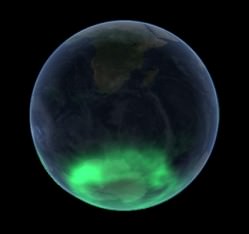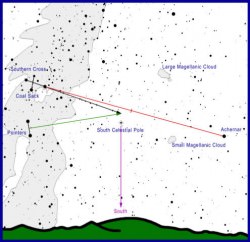On April 18th, 2018, NASA’s Transitting Exoplanet Survey Satellite (TESS) took to space for the first time. By August, it began capturing the light curves of distant stars for signs of planetary transits, effectively picking up where the Kepler Space Telescope left off. Now, just a few months away from the end of its primary mission, NASA has put a year’s worth of images of the southern sky together to create the beautiful mosaic you see here.
Continue reading “TESS Has Now Captured Almost the Entire Southern Sky. Here’s a Mosaic Made of 15,347 Photographs”The View from Down Under
Something that baffled me throughout my childhood, growing up in Australia, was the frequent references to the Man in the Moon, in children’s books and other popular media. I just couldn’t see it.
Only in my adult years have I put two and two together and realized that all those references were made by people from the Northern Hemisphere.
South of the equator we really are down under, even in astronomical terms. All the stuff you can see in the night sky around the celestial equator and the ecliptic we can see too, but it’s all upside down (or from our point of view, right side up).
So the lunar maria you see on the Moon’s surface, we can see too, but upside down none of it looks anything like a human face.
And Orion’s Belt? Nope, don’t get that either. What we see is an asterism we like to call ‘the Saucepan’ because what you see as a dagger hanging off a belt, we see as a handle rising from a pot.
We’ve also got our own down under Aurora Australis, although you’d have to climb a mountain in Tasmania, or even better catch an icebreaker to Antarctica, to see it.
climb a mountain in Tasmania, or even better catch an icebreaker to Antarctica, to see it.
But look, I’m envious. You’ve got a pole star, Polaris, which we never get to see. And you get a good view of the Andromeda Galaxy, which just barely peeks over our northern horizon around summer.
Down under, we have to use the Southern Cross to find the southern celestial pole. The Cross contains some of the southern sky’s brightest stars. During the winter months when it’s high in the sky, it’s generally the first group of stars to become visible after sunset, along with the nearby Pointer stars – which are actually Alpha and Beta Centauri.
The Southern Cross is kite-shaped and if you draw a line out from the kite’s long axis and another line out from between the Pointers, those two lines meet at the southern celestial pole. From there, just drop your hand straight down to the horizon and you are pointing due South. Cheaper than a compass.
We also have a couple of dwarf galaxies to look at, being the Large and Small Magellanic Clouds. OK, they are much smaller than Andromeda, but they are also a lot closer and hence appear much bigger. To the naked eye, they really do look like a couple of faint, wispy clouds.
For most southern sky observers, the Magellanic Clouds and the Southern Cross are circumpolar, slowly spinning around the southern celestial pole each night without ever setting.
You probably know that the story about how water spirals down the plug hole in opposite directions on either side of the equator is just urban myth. But it is the case that while stars in the Northern Hemisphere appear to spin slowly around Polaris in an anti-clockwise direction, all our stars spin around the southern celestial pole in a clockwise direction.
It’s true – fair dinkum.

